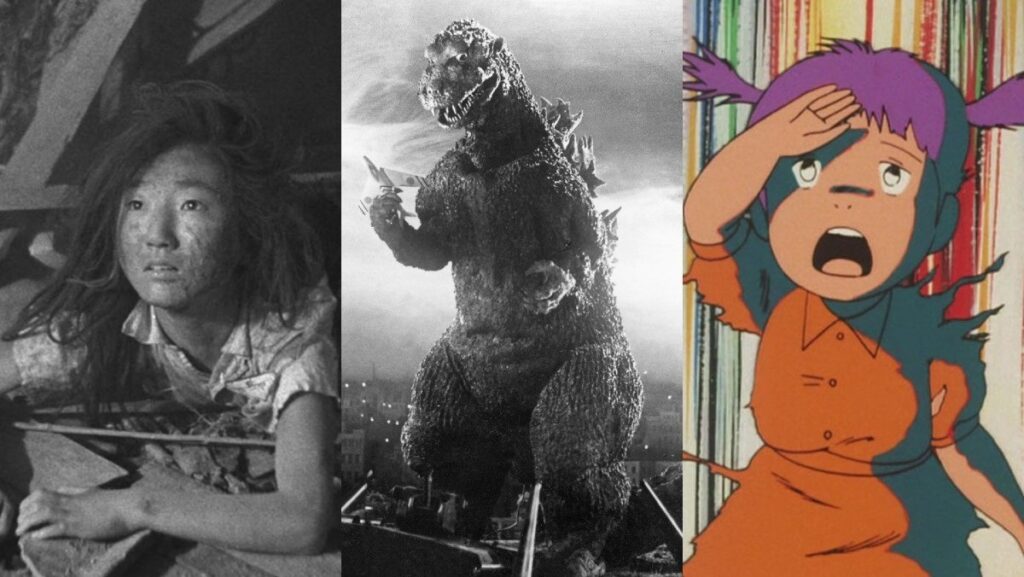Oppenheimer is a big movie. So big, it grossed more than $230 million worldwide in its first five days of release. That’s one of the highest-ever draws for a three-hour, talky biopic with little action. The one-two punch of Barbie and Oppenheimer not only ignited the box office, but set off a wave of discourse on social media—including discussions of inclusivity and the dangers of white male genius narratives.
One major criticism lodged at Oppenheimer is writer/director Christopher Nolan’s choice not to depict the bombings of Hiroshima and Nagasaki. While the film places us very much in that era of J. Robert Oppenheimer’s life and work, it limits the scope of World War II. Instead of exploring the consequences of nuclear warfare visually, it does so sonically and with nightmare logic. We hear the screams of victims. We feel the horror in the editing. But the true cost of life remains offscreen.
There are larger conversations to be had about what stories the mainstream hears and who gets to tell them. But one thing lost in this particular discussion is the rich history of Japanese filmmaking and artistry. There are 70 years of cinematic text by Japanese storytellers about Hiroshima and Nagasaki made by some of the country’s most prolific and beloved filmmakers. And it’s not just war dramas and documentaries. The bombings are key storytelling elements in everything from thrillers to monster movies to anime. They are part of the fabric of Japanese storytelling and they deserve an audience, too—especially since so many are available to stream right now.
Here are eight movies made in Japan that recount or grapple with the legacy of Hiroshima and Nagasaki and where to watch them. They may not be Oppenheimer-level blockbusters, but they’re just as important. It’s on us to celebrate and seek out world cinema and hold a place for it in these conversations.
Hiroshima (1953)
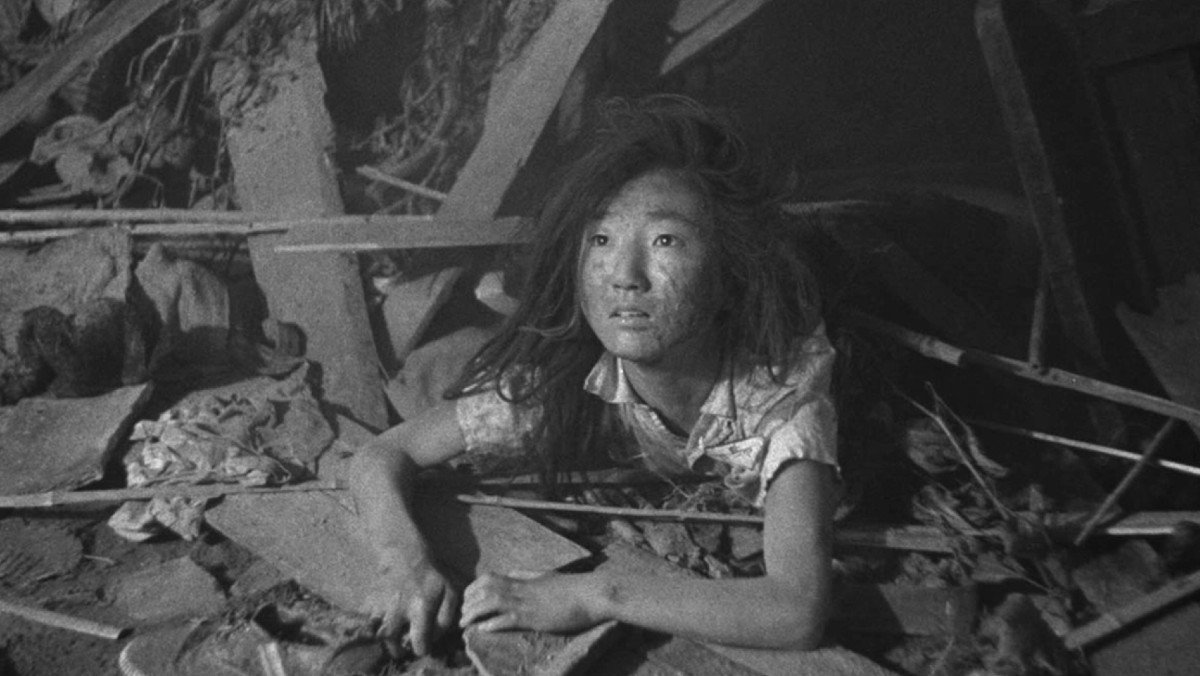
Set in the aftermath of the August 6, 1945 bombing, Hideo Sekigawa’s Hiroshima follows a group of survivors, known as hibakusha, as they flee destruction and attempt to rebuild their lives. It’s an unflinching look at the real cost of nuclear war, with haunting imagery of bodies in water, abandoned children, flame, rubble, and palpable fear. And because it was filmed just seven years after the real event, there is a stark intimacy in every frame. These are real Japanese people living in the devastating aftermath of inconceivable human atrocity. It’s a harrowing, but important, watch.
The film was well received when it came out in 1953. Its release in America in 1955 marked the first time many in the U.S. saw re-creations of the bombings and understood the human cost. Hiroshima fell into obscurity in later years, but a 2005 DVD release and subsequent digitization in 2017 helped revive interest and cement its classic status.
Where to watch: Stream on Arrow | Rent or Buy on Amazon
Black Rain (1989)
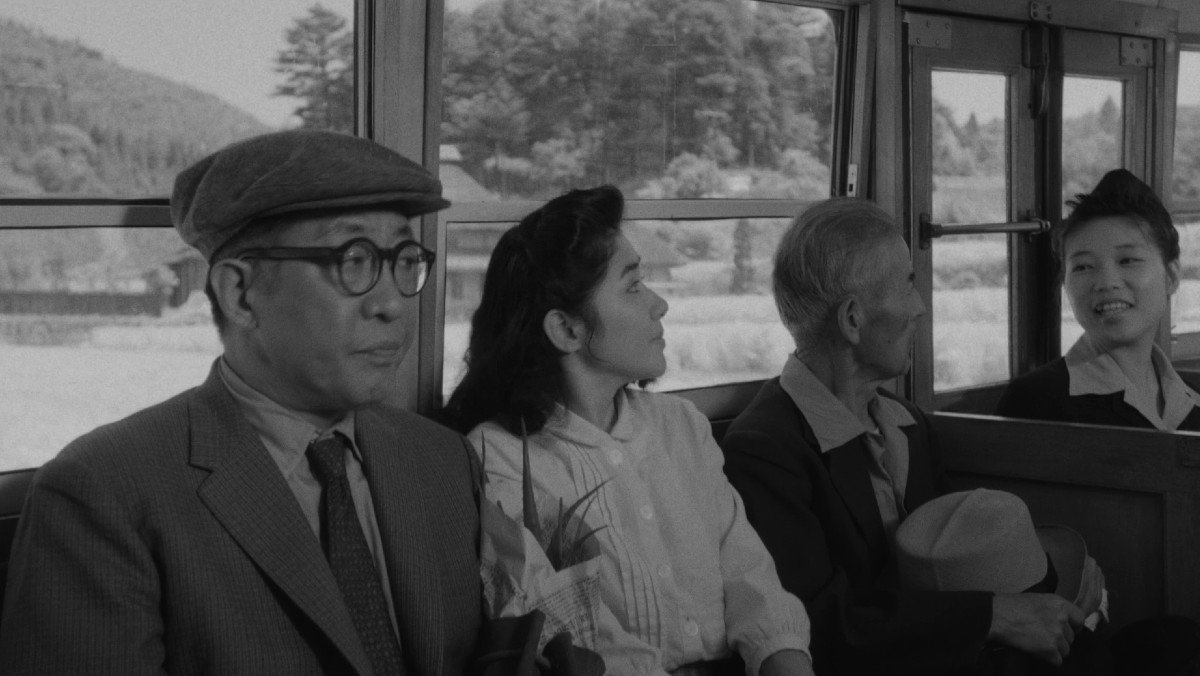
Despite surviving nuclear warfare, hibakusha and their children faced enormous discrimination in post-war Japan. This was largely due to ignorance surrounding the last effects of radiation sickness and the belief that it was contagious. The 1989 Shohei Imamura film Black Rain grapples with the negligence many Japanese people experienced in the aftermath of the bombings. It follows a family of Hiroshima survivors dealing with radiation sickness and its overwhelming emotional toll. It’s another hard watch, laced with firsthand accounts of radiation poisoning and its graphic deadliness. But its willingness to interrogate the mental cost of war, not just the physical, makes it a moving and necessary entry in the Japanese film canon.
Where to watch: Stream on Arrow | Rent or Buy on Amazon
Frankenstein vs. Baragon (1965)

Also known as Frankenstein Conquers the World, this is a wildly different interpretation of WWII nuclear anxiety, but an important one all the same. Directed by Ishirō Honda, the film follows the Frankenstein monster’s living heart (yes, really) as it goes from Nazi Germany to Hiroshima, Japan. Just as Japanese scientists begin to experiment on the heart, the bomb drops. The heart then grows into a giant, radiation-absorbing creature that destroys all in its wake—a walking metaphor for Japan’s collective anxieties about nuclear fallout. It’s a little goofy and a lot of fun, but it’s also a reminder that genre is another way to process and work through collective cultural fears.
Where to watch: Stream on the Criterion Channel
Godzilla (1954)
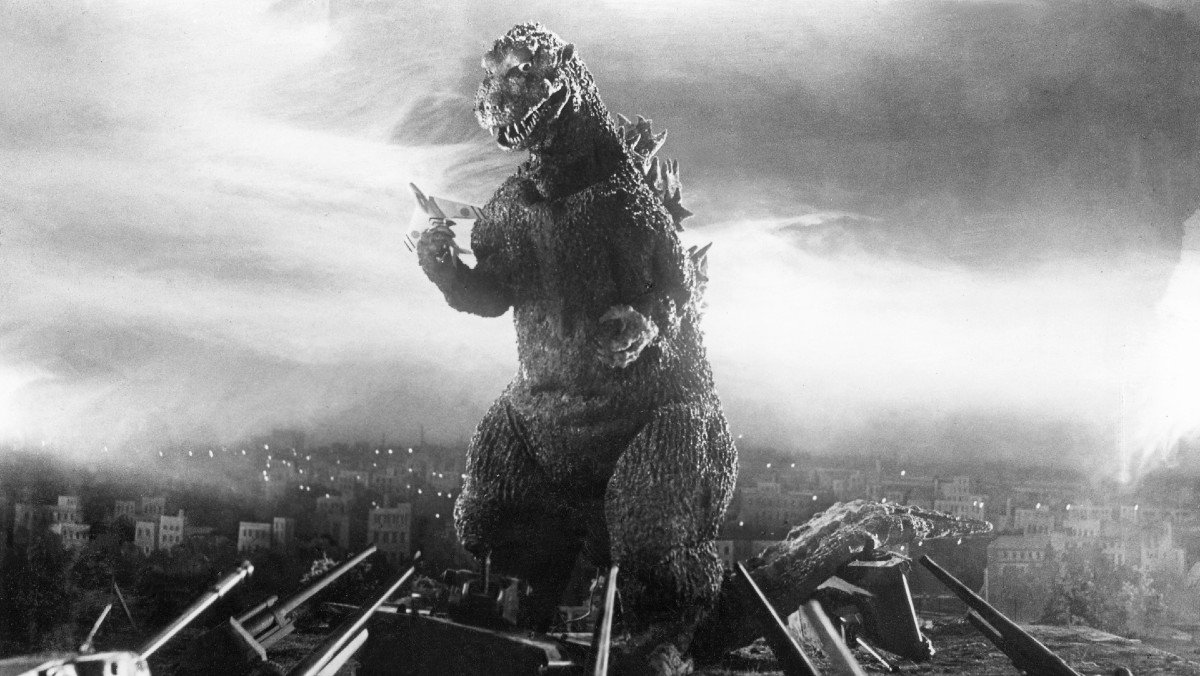
Speaking of monster movies as metaphor for nuclear anxieties, it’s hard to talk about the genre without mentioning Godzilla. Though the original 1954 film doesn’t explicitly depict the Hiroshima and Nagasaki bombings, they’re deeply felt in the story. In fact, director Ishirō Honda told the press he “took the characteristics of an atomic bomb and applied them to Godzilla.” Indeed, the film shows Godzilla devastating Tokyo the way a bomb might. Igniting fires, spewing radioactive poison from his mouth, and destroying homes and buildings.
The people of Japan had a hard time speaking about their trauma around WWII. So popcorn movies like Godzilla were a vessel to understand and alleviate some of that internal conflict. At the time of its release, many Japanese people left the theater in tears. To them, Godzilla wasn’t just campy monster schlock, but a cathartic viewing experience. That Godzilla is still a huge part of culture is a testament to his power as metaphor and message.
Where to watch: Stream on Max
In This Corner of the World (2016)

This animated film by Sunao Katabuchi—based on a popular manga series—takes place during WWII and revolves around Suzu, a young woman from Hiroshima. It contrasts the beauty and traditional culture of Japan with the harsh realities of war. Suzu is an artist who draws and paints the tranquil life around her—which slowly fades into daily air raids, imperial influence, and eventually nuclear fallout. The beautiful animation and romantic storytelling are a softer lens into WWII-era Japan, and Suzu’s story—one of great loss and impossible hope—will stay with you long after the credits roll.
Where to watch: Stream on Peacock
Children of Hiroshima (1952)
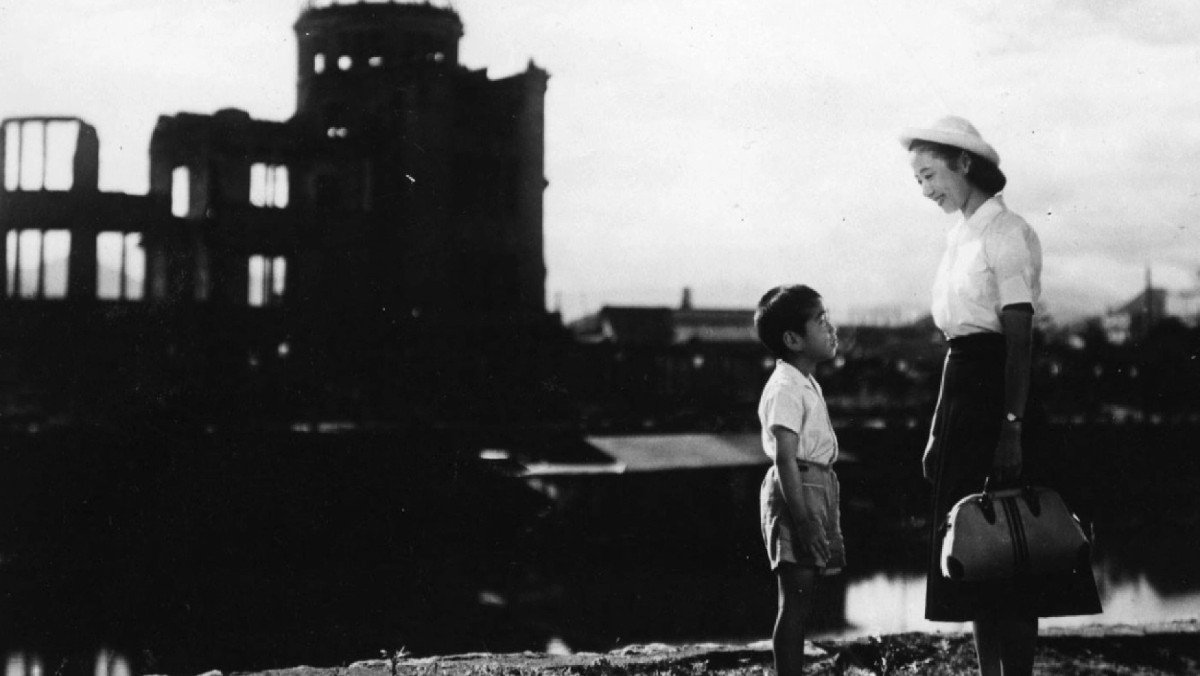
Similar to Black Rain, Kaneto Shindo’s Children of Hiroshima deals with the lasting effects of trauma and the emotional toll of nuclear war. The film follows schoolteacher Yasuko who returns to her hometown of Hiroshima post-WWII to mourn her family, who were killed in the bombings, and reconnect with other people from her past. Through Yasuko, we see how radiation sickness rages on long after warfare.
While initially criticized for its overt sentimentality and “outsider” view on the bombings, the film has a lasting legacy. It debuted in America in 2011 where it found a warm reception. Despite its more saccharine elements, the sentiment aged well. It’s a tearjerker, but one borne of real emotion and devastation. It also led to the development of the aforementioned Hiroshima (1953), which aimed to be a more accurate first-hand account of the bombings.
Where to watch: Stream on Tubi
Barefoot Gen (1976)

Based on Keiji Nakazawa’s manga series of the same name, this animated film tells the story of a six-year-old boy named Gen Nakaoka. It shows the aftermath of the Hiroshima bombings through the eyes of a child. After the rest of his family is killed, Gen is left to fend for his pregnant mother. He sees survivors around him fall ill from a sickness he can’t comprehend. All the while he struggles to find food and deal with other stressors no child should have to face. It’s a heart-wrenching story, and one that had a major impact in Japan. The manga also produced a 1976 live-action adaptation, its sequel, and two more Barefoot Gen animes films following the later years of Gen’s life.
Where to watch: Stream on RetroCrush
Labyrinth of Cinema (2019)

Nobuhiko Obayashi’s Labyrinth of Cinema is a unique retrospective look at Japan, including the bombings. It centers on three young men who find themselves transported back in time to pivotal moments in Japanese history, particularly World War II. Through a blend of fantasy and dramatic recreations, the film explores the horrors of war and its Japanese society. It also uses a blend of folk art imagery, green screen, and bursts of color to highlight its theme of anti-war resistance. It’s also a personal story for Obayashi—who horror fans might know from his cult film House—as he grew up in Hiroshima. This is the last film Obayashi completed before his death in 2020 and serves as a lasting tribute to his mad genius.
Where to watch: Buy or Rent on Amazon

